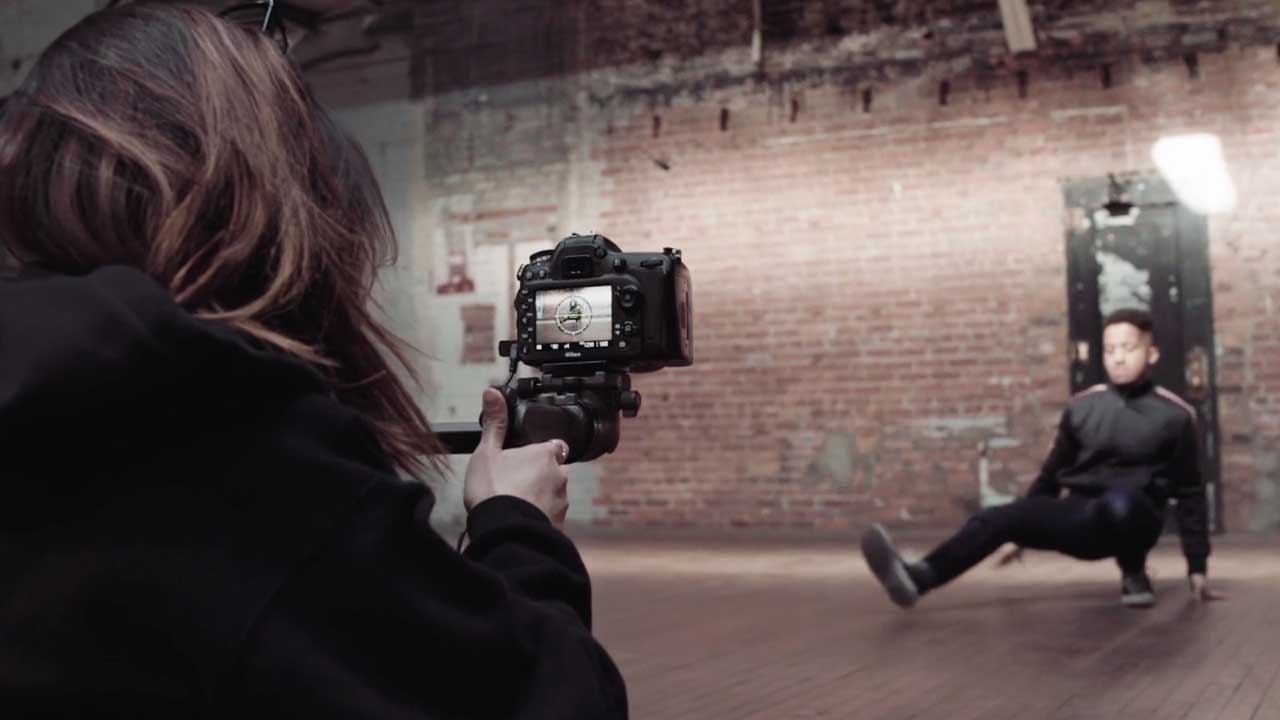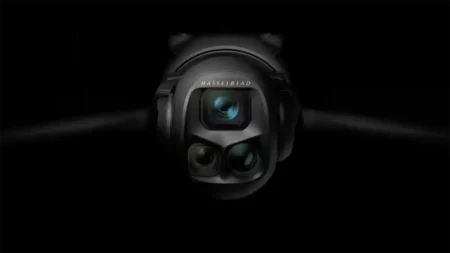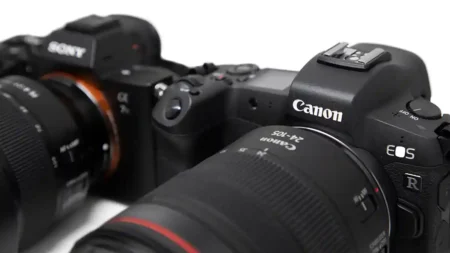With dozens of cameras now featuring advanced video capabilities the choice of models can often be confusing. To make things clearer we explore the major factors to consider when choosing the best camera for shooting video. In this guide we’ll tell you what features you’ll need as well as a few must-have accessories.
In late 2008 the launch of the groundbreaking Canon EOS 5D Mark II DSLR ushered in a new era of filmmaking thanks to its Full HD 1080p video shooting. It blurred the lines between using DSLRs as stills cameras and traditional video cameras. Over a decade later the array of cameras offering the much higher resolution 4K shooting – and even Cinema 4K (at 4096×2160 pixels) – is quite astonishing.
So how should you go about choosing the best camera for shooting video – whether it’s a DSLR, mirrorless, compact, bridge, action cam or drone? This guide examines how to navigate your choices in order to make the best camera selection for your video shoots.
Camera types
Most current mirrorless and DSLR cameras shoot video and many can capture UHD 4K or 4K DCI. If you’re looking for a single camera solution that shoots still photos and video, these tend to be a good choice. DSLR cameras are designed for optical viewing of the image through your lens, and thus incorporate a mirror that must be locked up out of the way to shoot video. This requires a Live View feature and an LCD screen to see what you are shooting.
Mirrorless cameras, on the other hand, have no mirror to lock up and use Live View by default. Good examples of mirrorless cameras for video include the Sony A7S and A7R series, the Panasonic LUMIX series (including the GH5/S and the GX80) and the Blackmagic Pocket Cinema Camera 4K.
Interchangeable lens DSLRs like the Nikon D7500 and the Canon EOS 250D / Rebel SL2 are mainly designed for serious still photography, but they are one of the most affordable ways to get into creative 4K filmmaking. They have relatively big APS-C sensors and lenses, which makes it easy to shoot ‘cinematic’ shallow focus shots. The downsides are you may need accessories to get the best out of them, they’re slower to use than dedicated video cameras, and audio recording can be tricky.
Large-body ‘prosumer’ camcorders, such as the Canon XA30, have built-in zoom lenses and headphone sockets. They’re faster and easier to use than DSLRs and mirrorless cameras, so they’re good for shooting news and events, but they have fairly small sensors. That means they aren’t as good in low light, and you can’t get as creative with shallow focus. Cameras like Sony’s AXC700 and the Canon GX10 have larger one-inch sensors and can shoot UHD 4K video.
If capturing fast action is one of your shooting priorities then action cameras may be a great choice as a B-camera. These little cameras are tough and can be mounted on bikes, helmets, cars, your body, or even animals. Most of them don’t have screens but the more expensive ones let you monitor the image with a wireless monitor or an iPhone or Android app.
The best current action cameras include the GoPro Hero7 Black (which shoots 4K at up to 60fps and 1080 video at up to 240fps) and the Yi 4K+ Action Camera which shoots 4K at up to 60fps, 1080 video at up to 120fps and 720 video at up to 240fps). DJI has also just released the Osmo Action, which also delivers 4K video and a host of other intriguing features.
Many of us have now eschewed investing in traditional cameras by shooting and editing video on tablets and smartphones. Smartphones are discreet and portable, and some of them can shoot great video in the right conditions, but you must remember that such footage won’t be as good as what you’ll get from a camera with dedicated video features.
For the purposes of this blog I will mention pro and digital cinema video cameras and dedicated cinema cameras, such as the Canon Cinema EOS system but it’s unlikely you’ll need such cameras until much later in your filmmaking career. If you are interested in pro and digital cinema video, camera brands to look out for include Panasonic, Sony, Canon, JVC, ARRI, Blackmagic Design, RED and AJA.
How much should a camera for video cost?
As with any equipment purchase, it’s best to start off with a defined budget. It seems obvious but always keep in mind if you have £500 to spend on a camera body, try to keep to that and examine the best options for that price point. You might also want to consider the secondhand market if you’re looking to get a bit more ‘bang for your buck’.
Another key factor to consider is whether you want an ‘all-in-one’ camera with a built-in lens or if you are simply adding a video option to your system.
For example, if you have a compact system camera (CSC) you might want to stick with that system but upgrade to the latest model with the most advanced video options. Long-term DSLR system devotees, such as Canon and Nikon users, will usually have a variety of lenses in their kitbags so will already have a variety of creative focal lengths to work with.
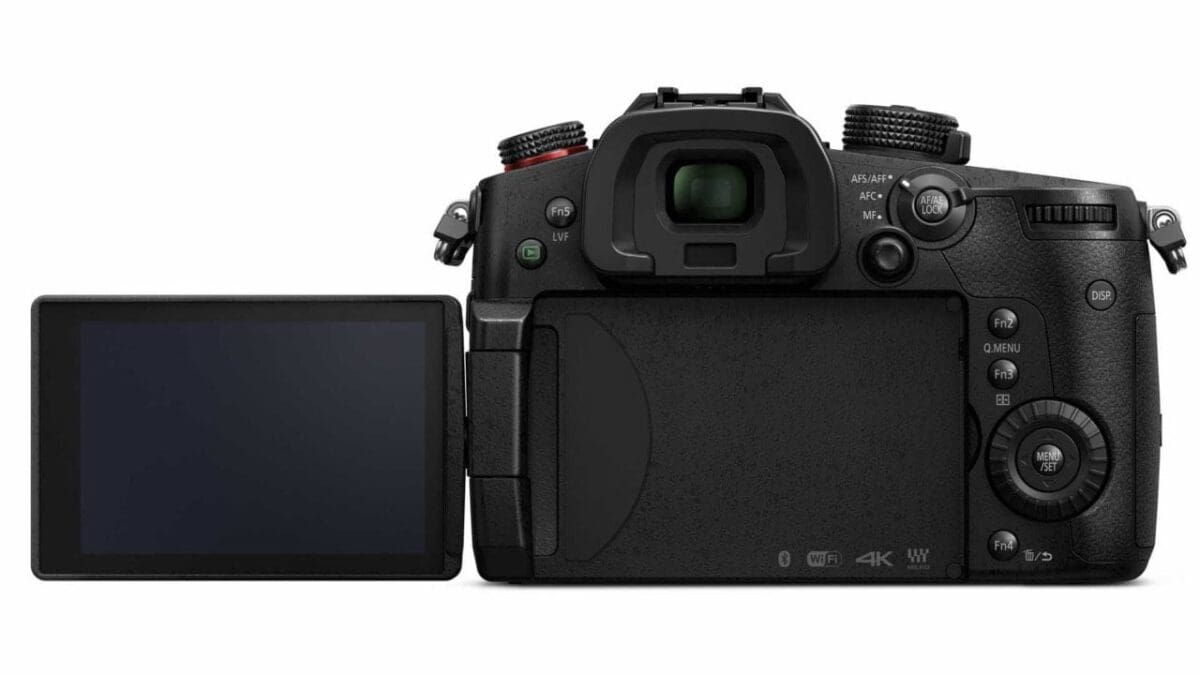
Ease-of-use
Another point that appears obvious is the ease of handling of the camera. Stills photography is often done standing still or working with a tripod but shooting video often involves moving your position, panning or shooting from unorthodox angles, often for significant periods of time. In this case you must be sure the camera you choose feels good in the hand and is something you would be happy to hold and work with for long shoots.
Having a flexible rear LCD screen on your camera can be a boon for filmmakers, especially when shooting in tight areas or at odd angles. A screen that can flip and twist will allow you to view and shoot in a wider range of situations – hence you’ll get more creative footage.
Ask yourself several ease-of-use questions… Is the camera comfortable to hold? Are the controls easy to use? Can you change the important settings with buttons and switches, or do you have to use menus? If there’s a touch screen, does it work well? As with any camera how comfortable it feels in the hand is important.
Creative options
As a rule of thumb try and invest in a camera that will offer you as many creative options as possible. It can be tricky to decipher all of the video resolutions on cameras – for example, Cinema 4K, UHD 4K, Full HD 1080p, 720p and so on – and the frame rates within those. Think about what quality you want from your footage and where it’s going to be shown – for example, if you are a vlogger, who will solely be putting footage online, you will not necessarily need higher resolutions.
The best straightforward advice is to look for a camera that offers a good array of the best possible quality video resolutions – preferably from 4K capability (either Cinema or UHD) downwards with the options of Full HD 1080p and below – combined with a range of shooting options.
For creative options a wide choice of frame rates will allow you to record different ‘styles’ of video. For example, 24fps is often used for cinematic productions and tends to deliver blurred backgrounds with near subjects in focus, whilst 60fps is better for clear imagery across the frame with smooth motion. To simplify matters, if your camera offers most of the 24fps, 36fps, 48fps, 50fps and 60fps options you will have most of the creative tools at your fingertips.
Focusing choices
Another key consideration is the focusing options within the camera for video. Nowadays autofocus for video is being phased in to many models, thanks to technologies such as Canon’s Dual Pixel CMOS AF, and you must consider if you need AF for video or if you prefer to manually focus when shooting.
Manual focusing gives you more control but AF should be considered if you are going to be shooting subjects that move more erratically.
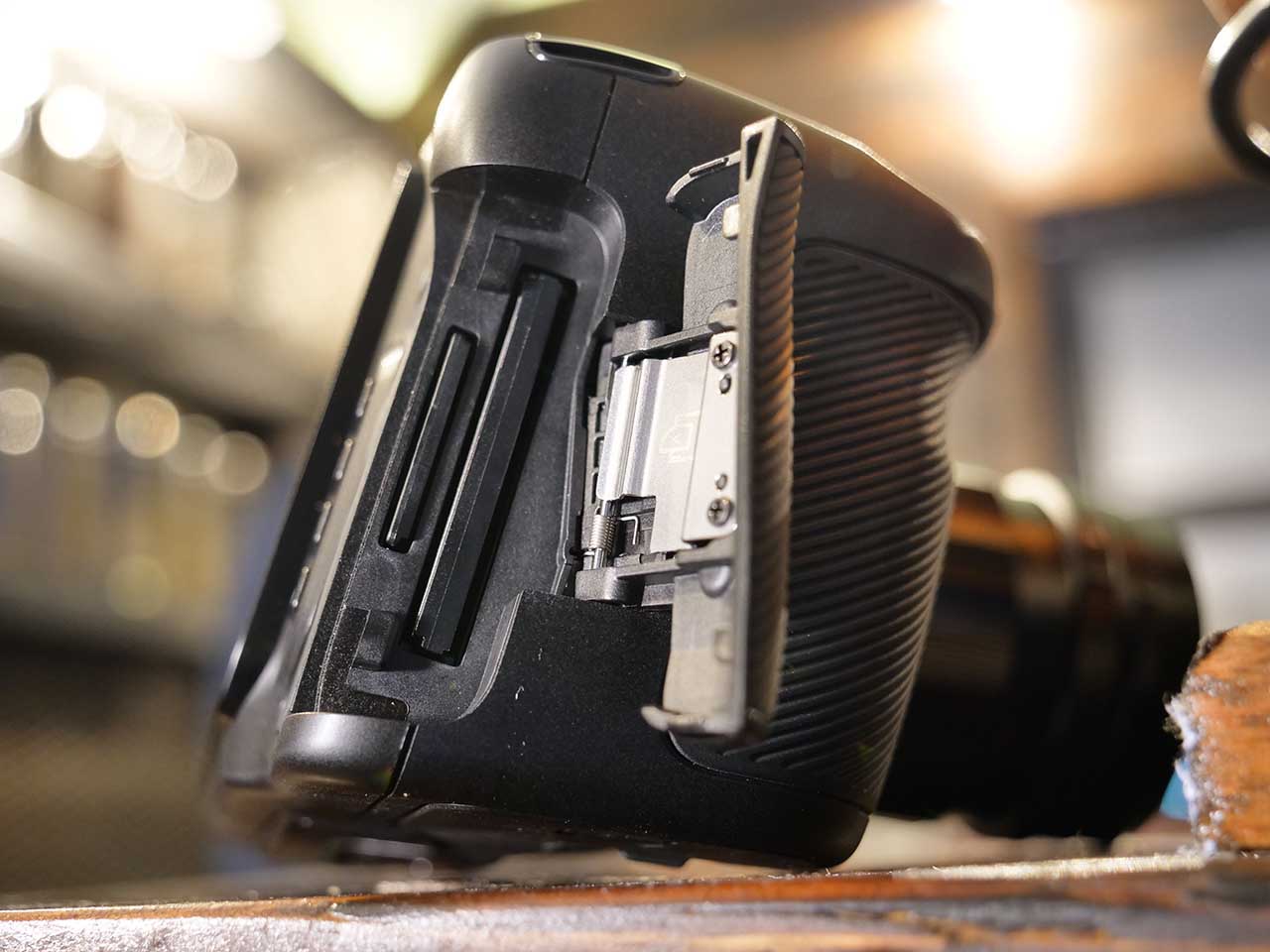
Storage considerations
Anyone shooting video also has to consider the memory card options in their camera. Unsurprisingly, video footage will eat up memory much more rapidly than shooting stills so consider what memory card slots your camera has and what compatibility they offer.
Good advice is to look for cameras with dual memory card slots so that recording can automatically switch to a second card if the first card has been filled up.
Also, look for those cameras that offer compatibility with the latest card technologies – such as C.Fast 2.0, CFexpress or UHS III – as these will offer power and speed for longer filming times and faster ‘read and write’ speeds.
Manual control
Most pro filmmakers will swear by manual control over their cameras as it gives them total control over what they are shooting. Always consider if your camera will let you manually set exposure, white balance and sound levels yourself, or if all such settings are automatic.
Such control may not seem vital to you when you start shooting video but it may be worth investing in a manual control camera so you don’t have to upgrade if your video skills improve quickly.
Lens options
When considering lens options it’s best to think in terms of if the camera will offer you wide, medium and close-up options – the three main, standard ‘shots’ in filmmaking – either via a built-in zoom lens or via interchangeable lenses.
You should also consider what’s the closest focus that a lens can shoot at and what’s the widest aperture you can shoot at. A low number, like f/1.7 or f/2, lets more light in so you can use the camera in dark conditions or get shallow focus effects.
Image stabilisation
Image stabilisation can make pictures less shaky. It’s not essential if you’re going to use a tripod or a good camera support, but it’s very useful for shooting handheld.
The most effective stabilisation, which features in some cameras like the Panasonic GH5, combines lens-based optical stabilisation and sensor-based in-body image stabilisation.
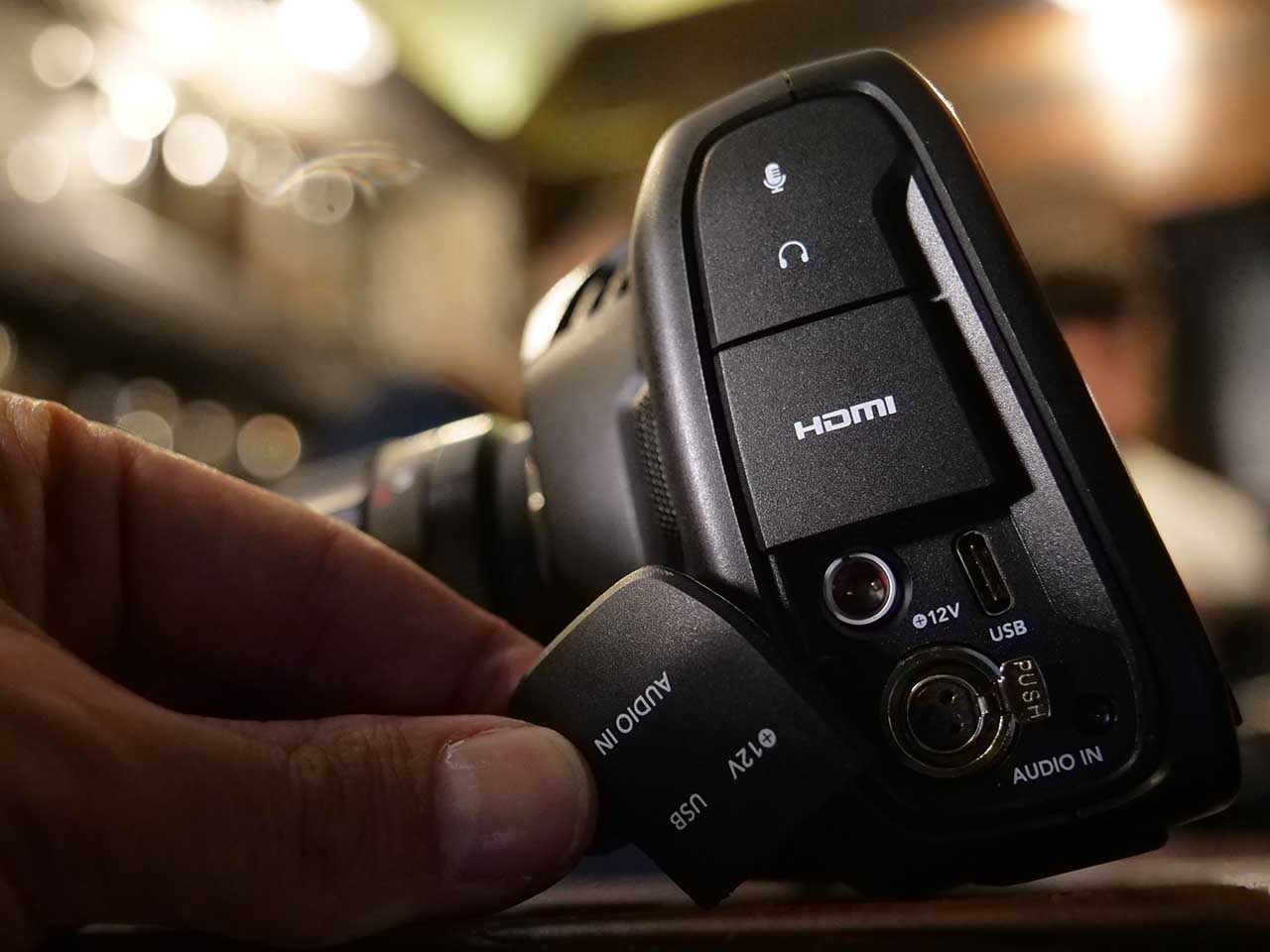
External audio
Recording video with any camera is really only half of the story as any filmmaker will tell you that capturing quality audio is just as vital. To that end consider the audio options offered by the camera you want. For example does it offer a headphone socket so you can monitor audio whilst recording?
Also, will it accept an external mic, either via an in-camera connection or perhaps a hotshoe connection?
Built-in mics are OK on cameras but you really should consider broadening your audio options beyond that via external mics. Remember that if you want to be able to use pro microphones, you need a camera with three-pin XLR inputs.
The camera ‘hub’
Finally, once you’ve taken most of the above considerations into account, think of where you want your camera to fit within your system. If you’re happy with an easy-to-hold camera that offers you the ability to add extra audio, or add some lighting and sound options then that’s fine.
Just remember to consider your camera as the ‘central hub’ of a filmmaking system and decide exactly what you want to add to it. A model that allows for external mics, direct output, monitors and lens changes will deliver you greater options for shooting videos, but you may want to start out with a more simple set-up and build up to this.
Make a wish list
This has been an overview of just a few of the key considerations to keep in mind when buying a camera to shoot video with. Like many choices when shooting video footage your camera choice is a very personal one, based on what you want to shoot and how you plan to go about shooting that.
Do your research and make a ‘wish list’ of what video features you’d like in a camera and what cameras you’d like to try out. Make sure you go out and handle the cameras before buying as a camera may have the spec you love but might not fit well into your hand. Just remember, the best camera for you is the one that puts the fewest limitations on your creativity and is the one that feels most comfortable in your hand.
